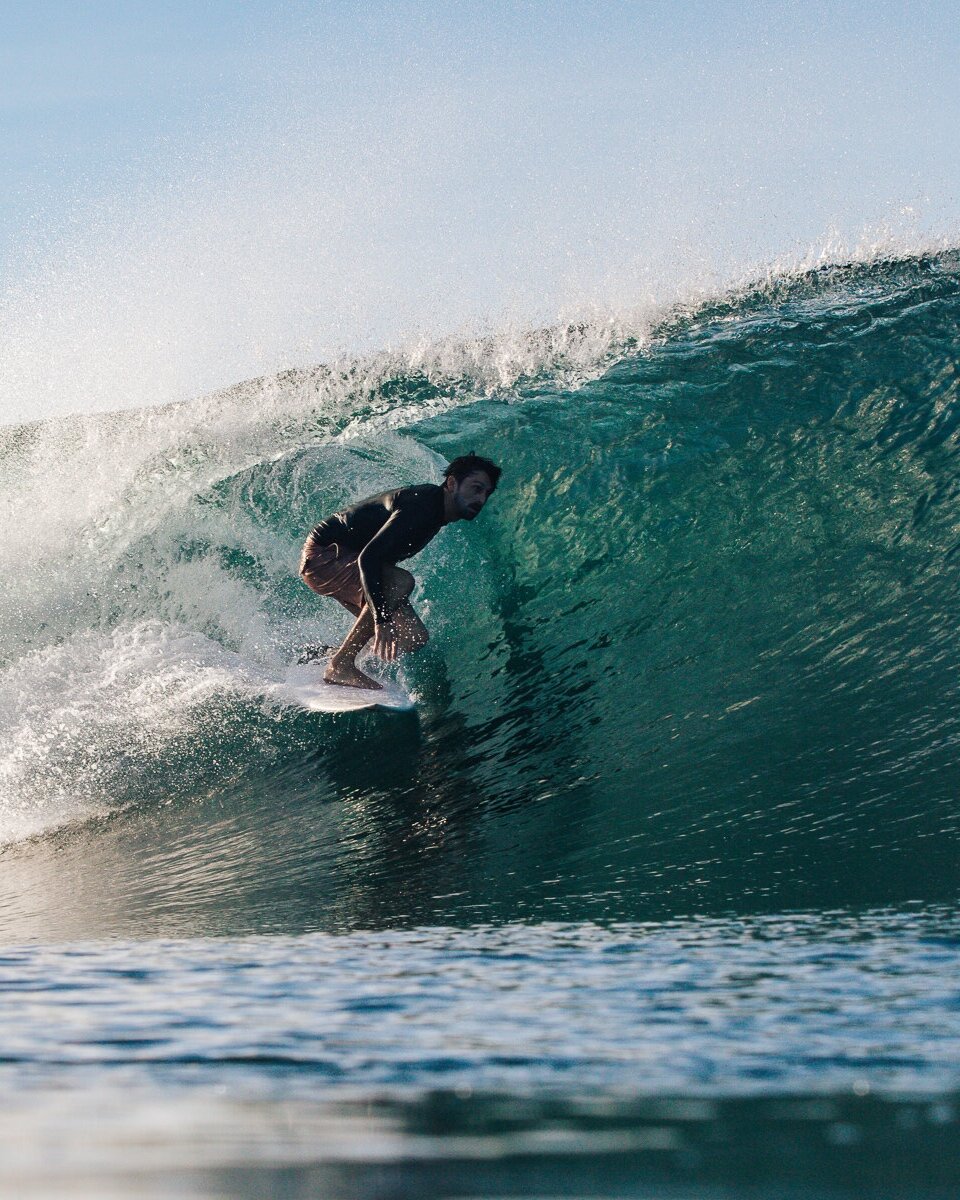
Waves & Weather
Nosara is the ideal place to take a surfing vacation regardless of whether you're just starting or you're slightly more advanced and looking to improve.
We often get better surfing conditions, even at the worst times of the year, than most places do at their best. So, even if you've just got a week's vacation, chances are you'll have great waves during your stay.

Typical surf conditions
The Surf at Playa Guiones rarely gets too big and it rarely gets completely flat. There is always soft, friendly white water on the inside for beginners wanting to build confidence and typically smooth, unbroken waves each morning, perfect for more experienced surfers wishing to challenge themselves out the back.
There are of course exceptions to this rule, and seasonal variations in wave size and quality. A good source of information on the general surfing and weather conditions here in Nosara is by looking up Nosara on Magicseaweed.com and then clicking on the ‘Seasonal Conditions and Historic Data’ section at the top of the page to see what conditions you can typically expect at a given time of year.
If you’re unfamiliar with the beach or new to surfing it’s always a good idea to take lessons with an experienced surf coach or guide. If you want help setting this up during your stay just let us know during your reservation.

Where to surf.
Costa Rica’s pacific coast naturally offers all different kind of waves. Beginners can enjoy their first surf lessons at beautiful sandy beaches like Playa Guiones catching the white wash near the shore. Advanced surfers will also enjoy waves breaking on sand as they increase in size. Some of the more advanced surfers might want to challenge themselves at some of the more challenging beach breaks or reef spots that can be found nearby.
Playa Guiones is just a 3 minute walk form Airstream by the Sea. It's an open beach, suitable for all levels and picks up most swell. it is also uncrowded, free of any natural hazards and is, of course, warm too. It’s a great place to learn to surf, offering plenty of manoeuvre opportunities and it’s also shortboard-able about 90% of the time.
If the surf gets particularly big there's a handful of lesser known surf spots and smaller bays that offer more manageable conditions for both beginners and intermediate surfers. There are also a number of reef breaks that can hold bigger and hollower waves for more experienced surfers too.
What kind of weather to expect in Nosara
Costa Rica has an exceptionally diverse climate for its small size due to the combined effects of weather systems originating over the Pacific and Atlantic Oceans, and the Carribean Sea, and the country's mountainous topography. Rainfall can occur year round, although the weather in Costa Rica is more or less divided into two seasons, a dry season, often referred to as high season, and a rainy season, often referred to as green season.
Dry season (December to April)
The dry season lasts from December till April. Rainfall levels drop dramatically to a light drizzle at the very start of the season and then reduce to the occasional light shower. Between February and March tends to be the driest time of year. It is coolest in December and January then heats back up, reaching the year's highest temperatures in April. In San José, the average high temperature gets down to 25°C in December and January, then creeps up to 26°C in February, 28°C in March and back to 30°C in April. During the start of the season, the heat levels are pleasant in the day time and you will get some relatively cool nights. Sunshine levels don't alter as despite the absence of rain it can still be cloudy. Bright, dry weather with comfortable heat is a regular occurrence.
Green Season (May to November)
Costa Rica’s rainy season (aka “Green Season”) lasts from May to November. But these “wet” months are actually a great time to visit. Because the rainy season starts soft and gradually builds over time, the early months are relatively dry and You’ll enjoy plenty of sunshine (especially in the morning) with minimal crowds and low season prices. We like to break Costa Rica’s rainy season into three parts: Early, Mid, and Late.
Early Rainy Season – May, June
Because Costa Rica’s rainy season starts soft, early May is often indistinguishable from the dry season. By late May and June light afternoon showers are common, but mornings are generally sunny.
Mid Rainy Season – July, August
The rains gradually increase in July and August, the mornings are still generally sunny, but rain showers become more common in the afternoon. There is, however, an important exception to this pattern. For several weeks in mid- to late-July, Costa Rica enjoys the effects of a dry weather phenomenon called veranillo (“little summer”). This “mini dry season” shifts from year to year. Some years veranillo happens in early July. Other years it stretches into early August.
Late Rainy Season – September, October, November
September and October are the depths of the rainy season. During this time, it can get very wet on the Pacific coast. The rainy season can sometimes last into mid-November. By late-November, however, the worst is over along much of the Pacific coast. The dry season often arrives by mid/late November in the North Pacific. In the South Pacific, however, the rainy season can last until mid-December.
HERE'S SOME OF THE REALLY USEFUL LINKS WE'VE USED TO SOURCE THIS INFORMATION;
www.magicseaweed.com / www.surfline.com / www.holiday-weather.com /
